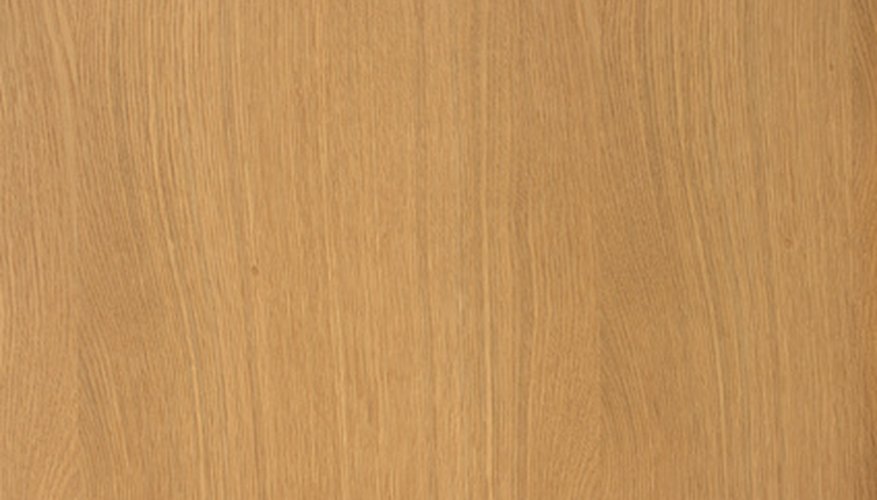Limed oak is bare wood that has been stained with a caustic lime mixture to lighten its natural appearance. The treatment was originally intended to repel insects, but has since become a purely decorative procedure. Like all wooden furniture, limed oak tables eventually begin to lose their finish over time. This can lead to drying and gradual cracks if the oak is not promptly refinished. Applying a wood stain and varnish to limed oak will restore its colour, density and texture.
- Limed oak is bare wood that has been stained with a caustic lime mixture to lighten its natural appearance.
Sand the table with a 100-grit sanding sponge to smooth out nicks, scratches and worn areas. This prepares the oak for staining while eliminating dirt and surface imperfections.
Dust the table with the duster to remove the grit left after sanding. Wipe it down with a tackcloth to remove the remainder of the sawdust.
- Dust the table with the duster to remove the grit left after sanding.
Stir a can of wood stain with a stirring stick until the contents at the bottom have been thoroughly mixed. Brush on an even coat with a natural-bristle brush, following the direction of the wood grain to renew and even out its colour. Use a rag to quickly wipe away the excess product before it dries.
Apply a sanding sealer over the limed oak with a new brush once the stain has dried overnight. Use long strokes along the grain of the wood. Once the coat is dry to the touch, smooth it thoroughly with a 280-grit sanding sponge.
Apply a polyurethane wood varnish to seal and protect the table's restored finish. Apply the product with a painter's rag or foam applicator brush. Allow it to cure overnight, then sand the oak with the 280-grit sponge. Repeat the procedure for at least one to two more coats of varnish to effectively seal the moisture in the wood; this will prevent future cracking, drying and warping. Do not sand the top coat.
